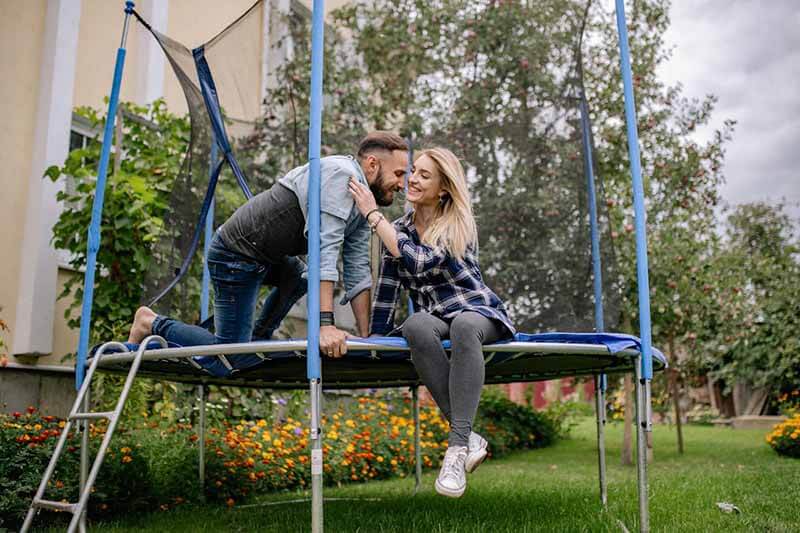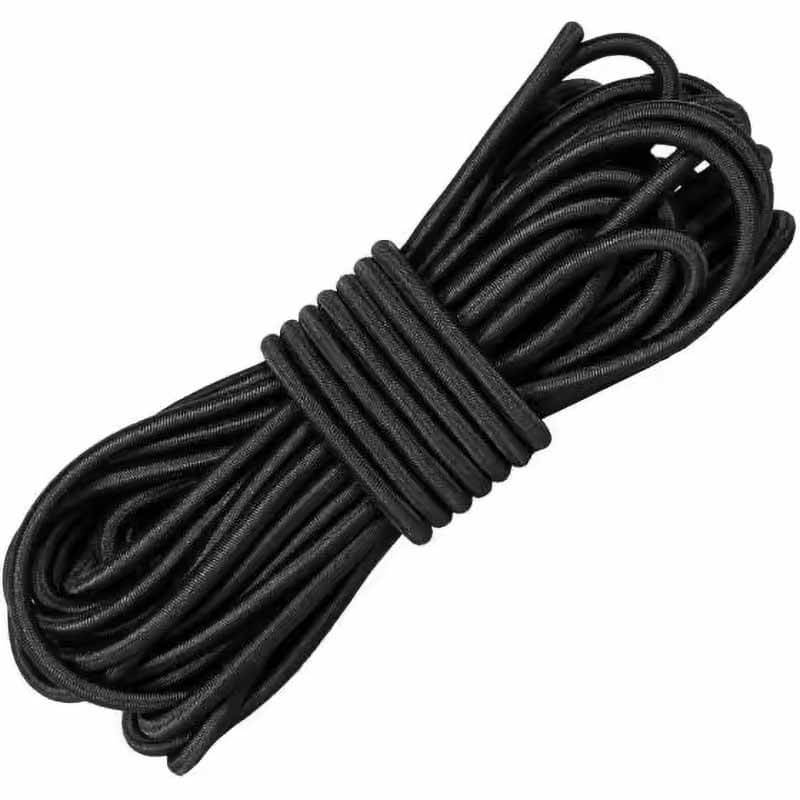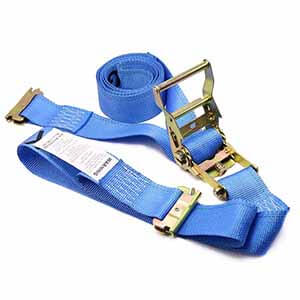Bungee Cord vs. Traditional Spring in Trampoline Design
A trampoline is a kind of sports equipment that combines physical exercise and entertainment and is suitable for men, women, old, and young. Therefore, it is widely used in family backyards, gyms, gymnastics training venues, and some children’s entertainment places.
The key components of the trampoline are its elastic components, they determine the trampoline’s performance, safety, and durability. The choice of the elastic material will affect the overall experience, including bounce quality, noise levels, and safety.
In the design of trampolines, there are two main types of elastic components used: traditional metal springs and trampoline bungee cords. In this blog, let’s take a look at the differences between bungee cords and traditional springs in designing the trampoline.

Traditional Spring Trampoline
The traditional spring trampoline was a common style in the past. Let’s take a look at the performance of this style from three main aspects.
Materials and Construction
The traditional trampoline springs are made from high tensile steel, They are generally coated with zinc to prevent rust and corrosion, so they can be used in the outdoor environment for many years. These springs are coiled tightly to provide the necessary tension to support the trampoline’s bounce. According to different costs, requests, and applications, these springs can be made into different lengths, thicknesses, and coil numbers.
Performance Characteristics
The use of the traditional spring can provide a stable and responsive bounce. The tighter the spring coils, the more efficient they are in storing and releasing energy. This makes spring trampolines ideal for outdoor trampoline projects and high-intensity sports. Additionally, steel springs are known for their durability and can withstand repeated stress without losing their elasticity, thus increasing the overall lifespan of the spring trampoline.
Safety Considerations
The traditional spring has a strong performance, but it also has some security risks. If the metal spring is not wrapped or covered, people playing may be pinched or injured by it. Therefore, do not let the exposed metal spring come into direct contact with people playing or exercising. However, as time goes by, the spring will slowly lose its tension or break, which will affect the bounce or cause other safety hazards. Therefore, it is very important to regularly check and maintain the condition of the spring.
Bungee Cord Trampoline
The emergence of the bungee cord trampoline makes up for many shortcomings of the spring trampoline. We will also analyze the characteristics of bungee rope trampolines from the following three aspects.
Materials and Design
The bungee cord for trampoline is made from high-quality rubber or synthetic elastic fibers, encased in a durable woven sheath. Different from the traditional spring trampoline, the trampoline bungee cord can not only provide significant tensile strength but is also more flexible and can custom different length and tension to suit different trampoline designs. One end of the cords is connected to the jumping mat, and another end is connected to the frame; this design will provide an even and consistent tension across the surface.
Performance and Flexibility
Compared to the traditional springs, the bungee cord can provide a different bounce experience. Especially for children or someone who just needs the trampoline for fun, not for professional sports training, the bungee trampoline cord is softer and has a more controlled bounce, which will let the users feel more comfortable. However, for someone who is looking for a more dynamic trampoline experience, the bounce of the bungee cord is not as responsive as that of a traditional spring.
Safety and Noise Reduction
One of the significant advantages of bungee cords is their safety and noise reduction. Using bungee cords for trampolines, you don’t have to worry about people getting pinched or injured. Additionally, trampolines that are custom-made or limit the weight of the person jumping are also less likely to suddenly lose tension. In terms of noise, the bungee trampoline cords are quieter than metal springs, this noise reduction effect makes trampolines a popular choice for home and indoor environments.

Bungee Cord Trampoline vs. Spring Trampoline
After knowing the features of each type, let’s make a comparative analysis for them.
Bounce Quality
The bouncing quality of a trampoline is one of the most important factors for users.
- Spring Trampoline: The spring trampoline is more sturdy, has a more responsive bounce, and is more suitable for athletes and people who like a more vigorous workout.
- Bungee Cord Trampoline: Bungee cords provide a softer, more controlled bounce experience, more suitable for children and those who don’t like high-impact workouts.
Durability and Maintenance
- Spring Trampoline: The Spring is made from high tensile steel and is known for its durability and ability to withstand significant wear and tear. However, without proper maintenance, they easily rust in the outdoor environment and will lose tension over time. So, regular check and maintenance is the key to extend the service life of the spring trampoline.
- Bungee Cord Trampoline: Bungee cords will never rust, but they will degrade due to prolonged exposure to UV rays and extreme conditions. This material requires less maintenance, but the cords need to be changed after extended use.
User Experience
- Spring Trampoline: Strong elasticity, loud noise, and poor comfort.
- Bungee Cord Trampoline: The elastic force is gentle, reducing the impact on the joints and making little noise. The elastic rope’s structural design will not cause the risk of pinching the user like a spring.
Cost Considerations
When we talk about the cost of these two types of trampolines, we need to consider not only the purchasing cost but also the maintenance cost.
- Spring Trampoline: The initial purchase cost is lower than the bungee cord trampoline, but the overall cost of the spring trampoline increases as it requires regular maintenance and the cost of replacing rusted and worn springs.
- Bungee Cord Trampoline: The initial purchase cost is higher than the spring material, but the long-term maintenance cost is low.
The Application of Bungee Cord Trampoline & Spring Trampoline
Both of them are for jumping, you can use them for fun or for professional athletic training. According to different specific needs, they can serve different application areas.
The Use of Traditional Spring Trampoline
The application requires a robust and dynamic bounce. Such as Gymnastics, competitive sports, and situations where multiple users jump at the same time.
The Use of Bungee Cord Trampoline
The application that uses the bungee cord trampoline focuses on safety, comfort, and noise reduction. Widely used for those who don’t like high-intensity exercise, whose joints cannot adapt to high-intensity exercise, and who prefer indoor exercise.
You may also interested in:

Dave Lee
Dave Lee has amassed over two decades of experience in the cargo control industry, serving as a product manager. Prior to joining Webslingness, he spent three years at a transportation company.


